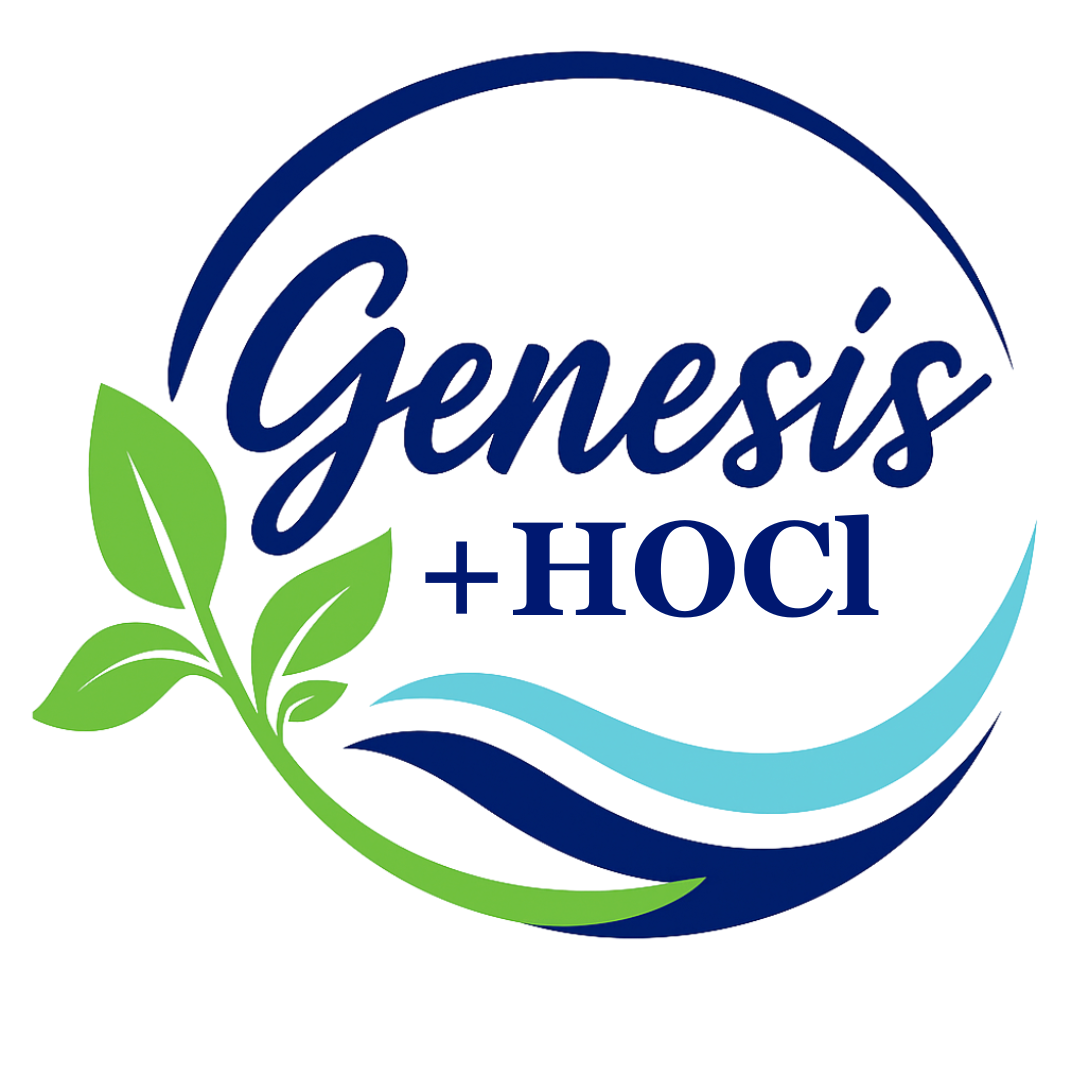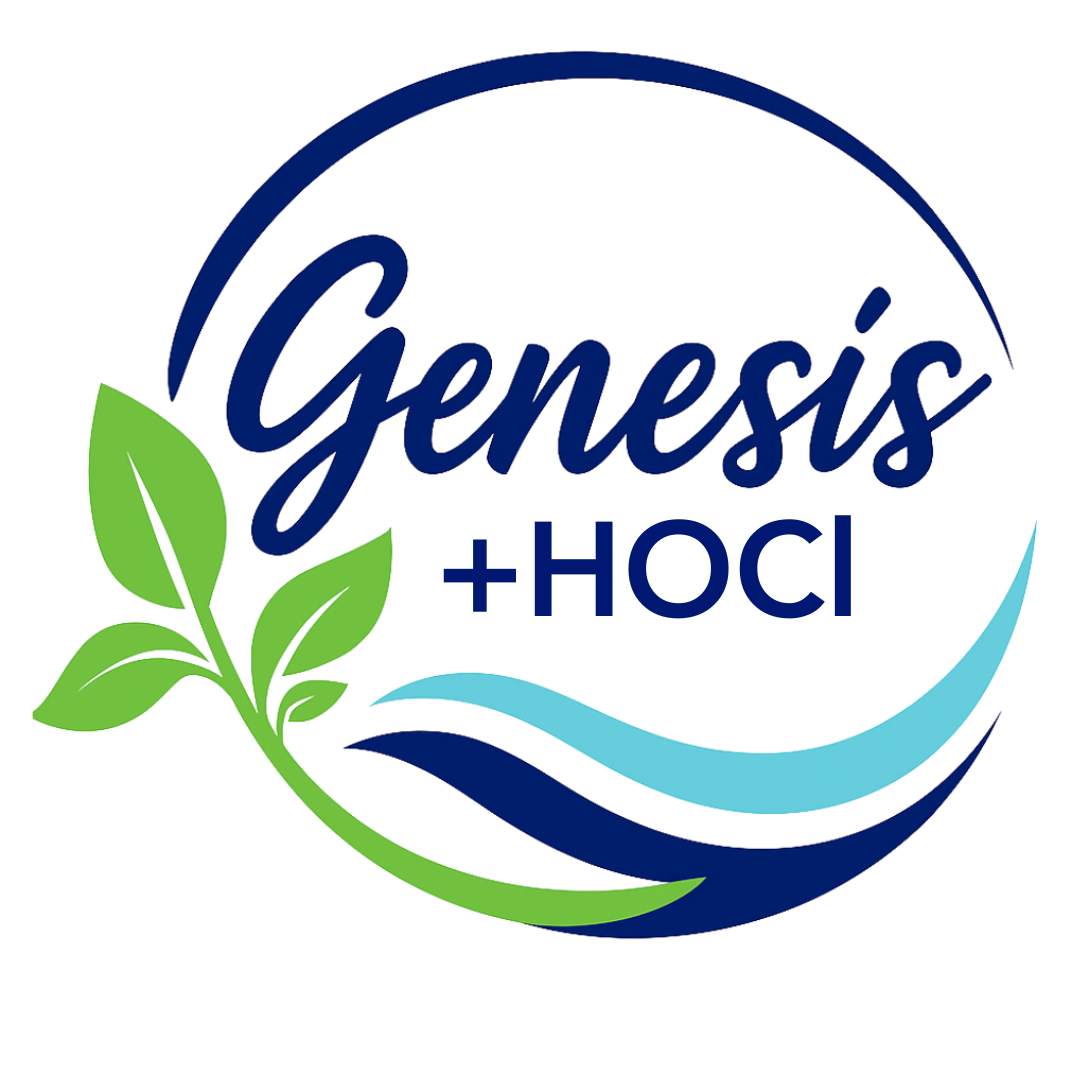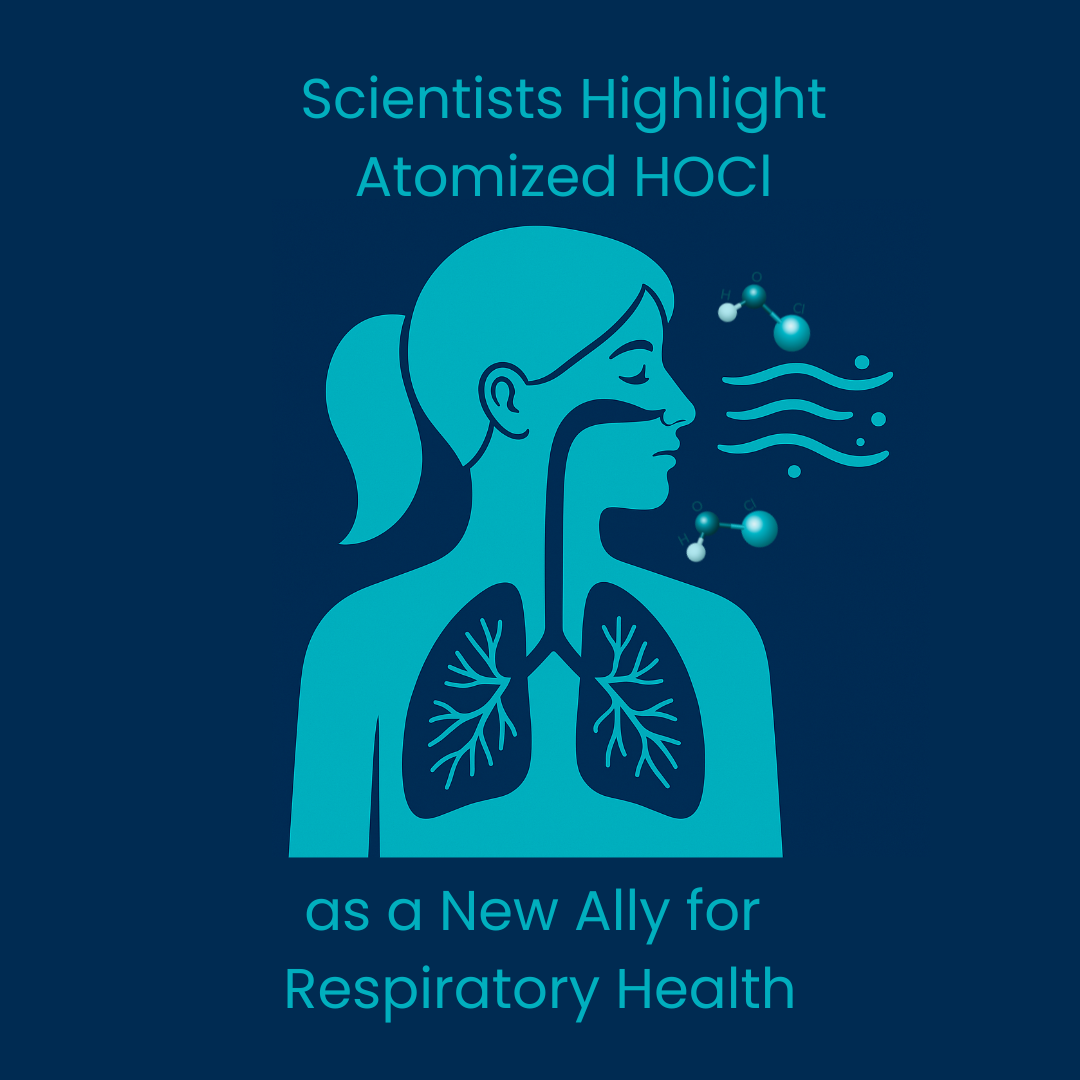Peer-reviewed research confirms atomized hypochlorous acid (HOCl) as a safe, effective respiratory antiseptic for defending the nose, throat, and lungs against viruses, bacteria, and fungi.
A newly published peer-reviewed study in Viruses (MDPI) highlights atomized hypochlorous (HOCl) — a molecule both powerful against microbes and gentle on tissues — for its ability to protect the nose, throat, and lungs from bacteria, viruses, and other respiratory pathogens.
While HOCl has a long history in medicine, especially in wound care, this review compiles scientific evidence indicating its benefits extend to respiratory health. The authors see the future of HOCl as a safe respiratory antiseptic.
What Is HOCl and Why Is It Unique?
HOCl is not some exotic lab invention — it’s actually a substance your own immune system produces to fight infection. When your white blood cells encounter invading bacteria or viruses, they generate HOCl to quickly neutralize these pathogens.
The beauty of HOCl lies in its dual strengths:
- Powerful germ-killing ability — Effective against a wide range of bacteria, viruses, and fungi.
- Gentleness on tissues — Unlike harsh antiseptics, HOCl doesn’t cause irritation, making it safe for sensitive areas like the eyes, nose, and throat.
Key Findings from the Review
The MDPI study highlights several compelling points:
-
Broad-Spectrum Efficacy
Atomized HOCl inactivates viruses, bacteria, and fungi — even those resistant to antibiotics. -
Safe for Mucosal Surfaces
Low concentrations (commonly 0.01%–0.02%, or 100–200 ppm) are well tolerated by the delicate tissues lining the respiratory tract. -
Multiple Delivery Methods
HOCl can be delivered as a nasal spray, gargle, or inhaled mist, making it adaptable to different needs and settings. -
Support for the Immune System
Evidence suggests HOCl not only kills pathogens directly but also supports immune responses, helping the body defend itself more effectively.
Practical Applications in Everyday Life
- Daily Nasal Hygiene

-
Sprays or rinses reduce the microbial load in the nasal passages, especially for people in high-risk environments such as healthcare, childcare, or crowded public spaces.

-
Soothing Throat Gargles
A diluted HOCl gargle targets bacteria and viruses in the throat before they gain a foothold. -
Inhalation Therapy in Clinics
Nebulized HOCl is used in medical settings to disinfect the upper airways before procedures or during outbreaks of respiratory illness.
-
Added Protection During High Transmission Seasons
During flu season or viral surges, regular HOCl use acts as an extra layer of defense alongside other preventive measures.
The Safety Factor
One of the biggest advantages of HOCl is its safety profile. Because it’s naturally produced by our immune system and breaks down into harmless components (essentially salt water), it’s environmentally friendly and non-toxic. That makes it attractive not only for personal use but also in hospitals, schools, and care facilities, where safety is paramount.
Looking Ahead
HOCl’s track record in other areas of medicine, combined with the growing evidence for its respiratory benefits, makes it a standout candidate in the fight against airborne illness. Its ability to balance high antimicrobial power with gentleness on human tissues is unique, and it’s precisely this balance that supports its future as an invaluable part of respiratory care.
If you’re considering HOCl for personal use, look for stabilized, medical-grade formulations and follow existing safety guidelines. As science continues to explore this molecule’s potential, we may soon see HOCl become as common in our respiratory care kits as it already is in wound care and disinfection.
📚 Source & Citation
Original Study: Rutala WA, Kanamori H, Gergen MF, Weber DJ. Hypochlorous Acid as a Promising Respiratory Antiseptic. Viruses. 2025; 17(9):1219.
Published by the Multidisciplinary Digital Publishing Institute (MDPI), an internationally recognized open-access publisher based in Switzerland.
Read the full article here →




Share:
Milwaukee’s Next Battle: Mold
Too Safe to Regulate, Too Effective to Ignore — The Paradox of HOCl